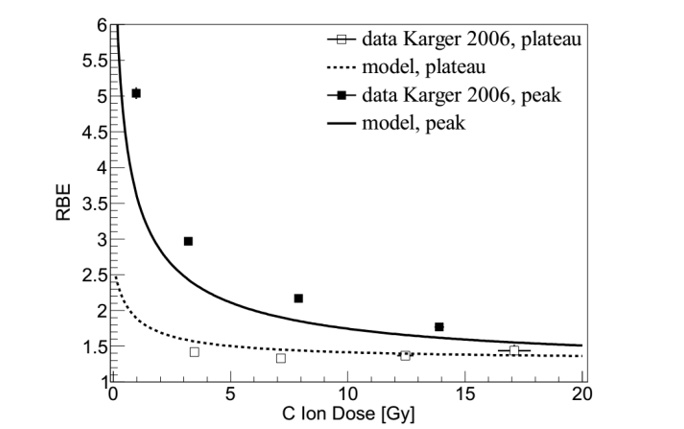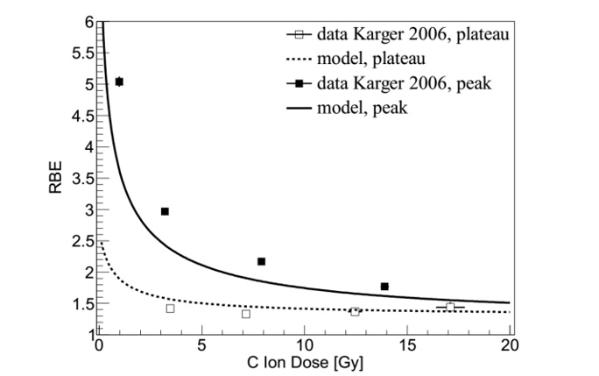In Vivo Validation of the BIANCA Biophysical Model

Cancer ion therapy is constantly growing thanks to its increased precision and, for heavy ions, its increased biological effectiveness (RBE) with respect to conventional photon therapy.
The complex dependence of RBE on many factors demands biophysical modelling. However, up to now, only three models have been applied in clinics: the Local Effect Model (LEM), the Microdosimetric Kinetic Model (MKM), and the “mixed-beam” model.
In a work recently published in the International Journal of Molecular Sciences, OMA Fellow Giulia Aricò together with an international team of scientists from Italy, Switzerland and Germany have applied the biophysical model BIANCA (BIophysical ANalysis of Cell death and chromosome Aberrations), developed at the University and INFN of Pavia, to predict cell survival for different ions, energies, and doses.

Predictions by BIANCA and experimental data of the Relative Biological Effectiveness as a function of carbon ion dose of the rat spinal cord.
After extensive validation in vitro, the model was applied to establish a radiobiological database of alpha and beta cell survival parameters as a function of particle type and energy.
Following interface with the FLUKA Monte Carlo transport code, for the first time, BIANCA was benchmarked against in vivo RBE data obtained by C-ion (see figure) or proton irradiation of the rat spinal cord. The latter is a well-established model for Central Nervous System late effects, which, in turn, are the main dose-limiting factors for head-and-neck tumours. Furthermore, these are the data that were used to validate the LEM model, developed at GSI and applied in clinics at HIT and MIT (Germany).
Although further benchmarking is desirable, the agreement between simulations and data suggests that BIANCA can predict RBE for C-ion or proton treatment of head-and-neck tumours. In particular, the agreement with proton data may be relevant if the current assumption of a constant proton RBE of 1.1 is revised, as it has been recently suggested by some physicists in the scientific community.
This work has provided the basis for future benchmarking against patient data, as well as the development of new databases for specific tumour types and/or normal tissues.
More information:
Mario P. Carante, Giulia Aricò, Alfredo Ferrari, Christian P. Karger, Wioletta Kozlowska, Andrea Mairani, Paola Sala and Francesca Ballarini, “In Vivo Validation of the BIANCA Biophysical Model: Benchmarking against Rat Spinal Cord RBE Data”, International Journal of Molecular Sciences 21(11), 3973 (2020).